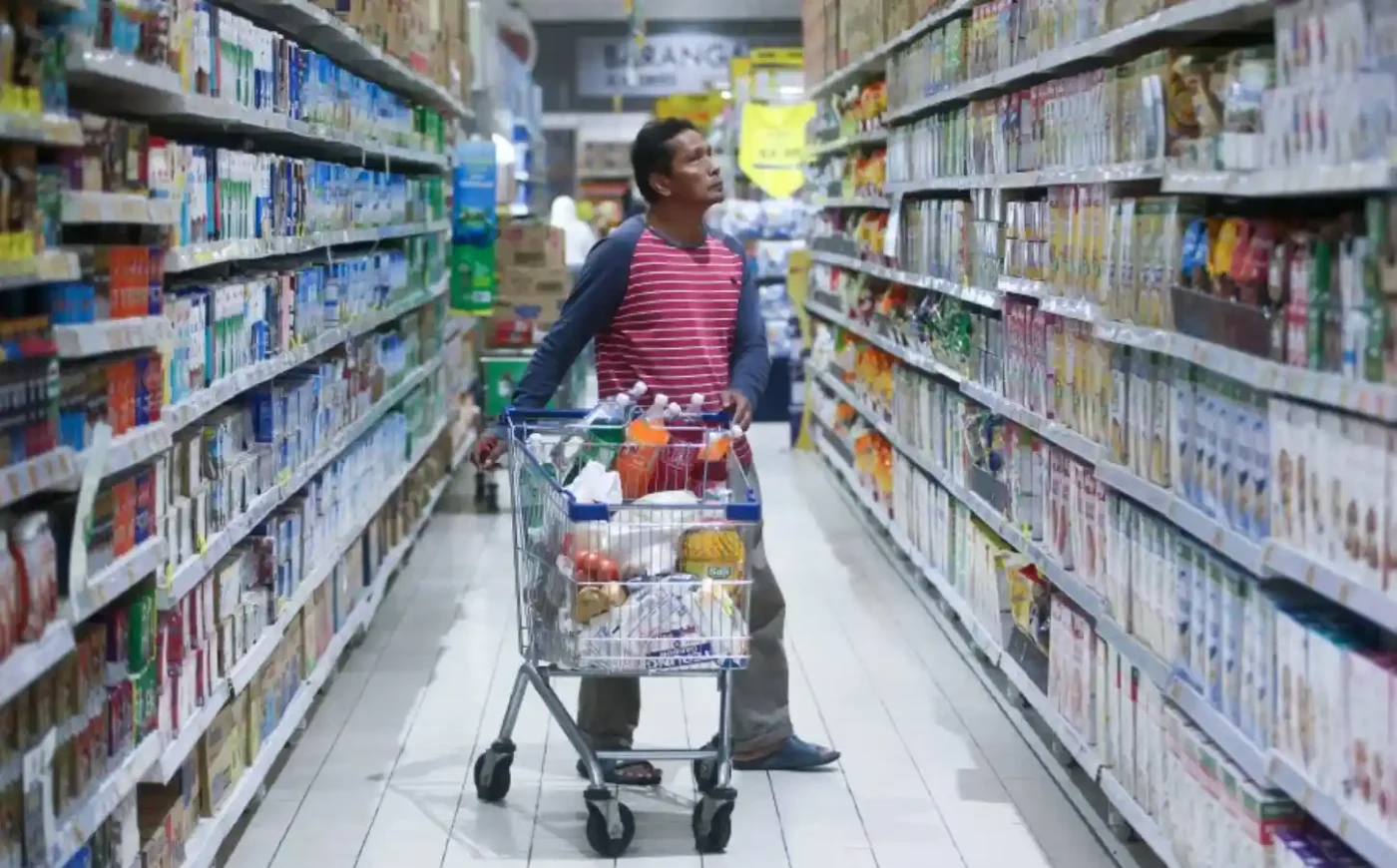In the bustling Prangin Mall of George Town, Penang, the once-routine indulgence of a manicure or facial has become a rare luxury for many Malaysians. As the cost of living climbs amid global economic uncertainty, personal care—once a staple of self-expression and wellness—is being sidelined by financial necessity. For individuals like accounts assistant Candy Loh, these small treats are now reserved for special occasions, a stark reflection of broader economic pressures reshaping daily life across the country.
From Routine to Rarity: The Cost of Self-Care
For 31-year-old Candy Loh, a visit to a salon in Prangin Mall is no longer a casual decision. Earning less than 3,000 Malaysian Ringgit (US$635) a month, she struggles to cover essentials like rent, car payments, utility bills, and food, while also supporting her parents. “I dyed my hair and got a manicure because my close friend is getting married. I want to look my best for her big day” she said. But such indulgences are rare. “Otherwise, the only other time I treat myself like this was during Chinese New Year. Even then, I searched for salons offering discounts before booking an appointment” Loh added.
Her story is not unique. With the rising prices of daily necessities, particularly food, saving has become a distant goal. “A few years ago, I could save around 400 to 500 Ringgit each month, but now it’s nearly impossible” she explained. Eating out due to a lack of time to cook further strains her budget, leaving little room for personal care. “There is hardly anything left after that” she admitted, highlighting the harsh trade-offs many face.
Scaling Back: Professionals Feel the Pinch
Even those with higher incomes are reevaluating their spending. M. Saraswathy, a 36-year-old lawyer, recalls a time when facials every three weeks, costing between 140 and 160 Ringgit (US$30-34), were a regular part of her routine. Today, with prices soaring to 240-260 Ringgit (US$51-55) per session, she limits herself to a facial once every three months. “In this economy, splurging like that just does not feel right” she said. Manicures, too, are now reserved for special occasions, and even wellness purchases have shifted to budget-friendly alternatives. “I used to stock up on popular branded supplements. Now, I look for products with the same ingredients that are on promotion or offer better value” she noted.
Despite an increase in her income over the years, Saraswathy finds her savings dwindling whenever she indulges. “Previously, I could save up to 1,500 Ringgit a month, even with regular facials and self-care. But if I treat myself now, my savings drop below 1,000” she said. Her discretionary spending is now largely confined to food and quality groceries, a safer bet in uncertain times.
Practical Choices Amid Rising Prices
For Grace Poh, a 49-year-old optical shop manager, personal care is a twice-a-year affair, often tied to cultural events like Chinese New Year. Even then, she relies on a friend’s salon for discounted rates. “Spending over 100 Ringgit on nails alone these days just does not make sense. That money can go towards paying my bills” she said. Like many, Poh hunts for deals on essentials like shampoo and home hair treatments, often buying online during sales. Yet, she refuses to compromise on skincare, opting for quality products that last longer rather than expensive one-off treatments. “I cannot imagine spending hundreds on a single facial session. I would rather invest in quality skincare that lasts for months” she explained.
Poh has also adopted a healthier lifestyle to cut potential medical costs, a strategy that helps her save a modest amount each month. Still, her savings have shrunk significantly. “I used to save about 800 Ringgit a month. Now, I can only manage 300 to 400” she said. An occasional new blouse or outfit is her small rebellion against a tightening budget, but even these purchases are carefully considered.
A Broader Economic Context
The experiences of Loh, Saraswathy, and Poh reflect a wider trend across Malaysia, where inflation and global economic headwinds are squeezing household budgets. According to the Department of Statistics Malaysia, the Consumer Price Index (CPI) rose by 3.2% in 2024, driven by increases in food, housing, and transport costs. Food prices, a significant burden for urban dwellers like Loh who rely on eating out, have seen some of the sharpest hikes, with a year-on-year increase of over 4%. Meanwhile, discretionary spending on personal services—such as beauty treatments—has become one of the first casualties of this economic strain.
Economists point to a combination of factors exacerbating the situation. Global supply chain disruptions, lingering effects of the COVID-19 pandemic, and fluctuating oil prices have driven up the cost of goods and services. In Malaysia, the weakening Ringgit against the US dollar has further compounded the issue, increasing the price of imported goods, including many personal care products and supplements. “The depreciation of the Ringgit means that even basic imported items, from skincare ingredients to packaged foods, cost more for consumers” said Dr. Lim Wei Chuen, an economist at Universiti Malaya. “For middle- and lower-income households, this translates to less disposable income for non-essentials.”
At the same time, wage growth has not kept pace with inflation for many Malaysians. While professionals like Saraswathy may see incremental salary increases, these are often eroded by rising costs. For lower earners like Loh, stagnant wages mean an ever-widening gap between income and expenses. A 2024 report by the Malaysian Employers Federation noted that nearly 60% of workers in urban areas earn below the recommended living wage of 2,700 Ringgit (US$570) per month for a single adult in a city like George Town, underscoring the financial precarity many face.
Cultural Shifts and Coping Mechanisms
Beyond the numbers, the shift in personal care habits signals a deeper cultural change. In Malaysia, grooming and wellness have long been tied to social and cultural milestones—think Chinese New Year, weddings, or Hari Raya celebrations—where looking one’s best is a form of respect and festivity. But as economic realities bite, these rituals are being pared down. The once-bustling salons of urban centers like Penang are seeing fewer regular clients, with many customers, like Poh, turning to discounts or DIY solutions.
This frugality extends to wellness trends as well. Supplements, once a booming market in Malaysia, are now approached with caution. Consumers are opting for generics over branded products, or, like Poh, sticking to basic vitamins rather than premium offerings. Online shopping platforms, with their frequent promotions, have become a lifeline for those seeking affordable alternatives, reshaping how Malaysians access personal care products.
Yet, not all adaptations are purely financial. Poh’s focus on a healthier lifestyle—eating better, exercising more—reflects a growing awareness that prevention is cheaper than cure. In a country where private healthcare costs can be prohibitive for the average citizen, such proactive steps are both a personal choice and an economic necessity. “I’ve realized that taking care of myself now saves me from bigger bills later” Poh said, a sentiment echoing among many of her peers.
The Road Ahead: Balancing Needs and Wants
As Malaysia navigates this period of economic uncertainty, the stories from Prangin Mall highlight a nation at a crossroads. Government initiatives, such as subsidies for essential goods and targeted cash assistance programs like Bantuan Sara Hidup (BSH), aim to ease the burden on lower-income households. However, for many, these measures fall short of addressing the day-to-day trade-offs between necessities and small joys like a manicure or a new outfit.
Analysts suggest that without sustained wage growth or stronger controls on inflation, discretionary spending will continue to shrink, potentially impacting sectors like personal care and retail. “The beauty and wellness industry, while resilient, is not immune to economic downturns. Salons and product manufacturers may need to pivot towards more affordable offerings to retain customers” said Dr. Lim. Some businesses in Penang are already adapting, offering package deals or loyalty discounts to lure cost-conscious clients like Loh and Poh.
For now, Malaysians are finding ways to adapt, whether through bargain-hunting, prioritizing essentials, or redefining what self-care means in lean times. As the economic landscape evolves, the question remains: will these small sacrifices become a permanent fixture of life, or can a balance be struck between financial stability and personal well-being? In George Town and beyond, the answer is still unfolding.















